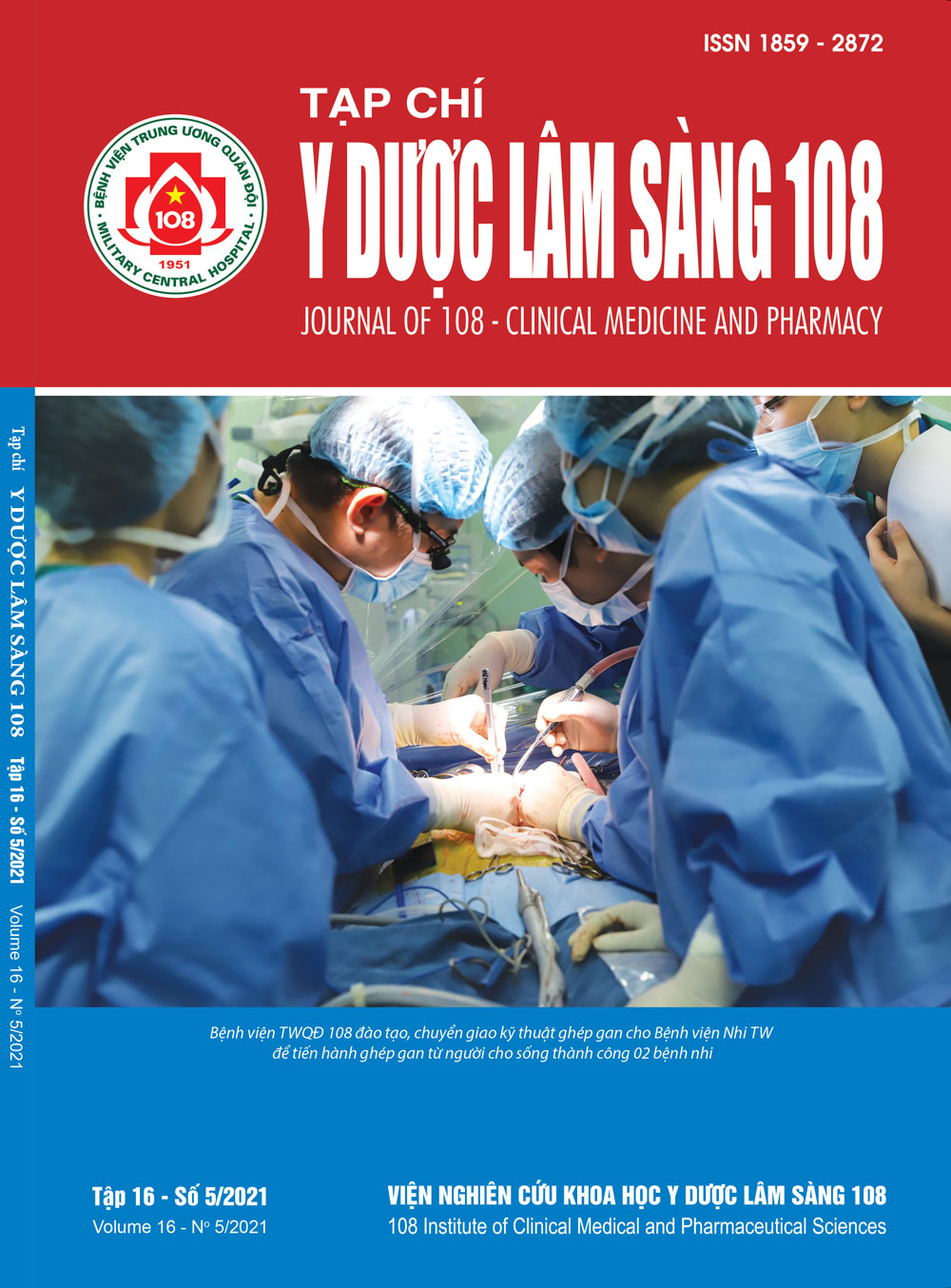Serum TNF- levels in patients with vitiligo at Ho Chi Minh City Hospital of Dermato-Venereology
Main Article Content
Keywords
Abstract
Objective: To compare serum TNF-a (Tumor necrosis factor alpha) levels between the patients and the controls. To identify the relationship between serum TNF-a and clinical characteristics. Subject and method: We performed a controlled cross-sectional study study in 51 patients with vitiligo and 51 age-and sex-matched healthy controls at Ho Chi Minh City Hospital of Dermato‐Venereology from January 2021 to June 2021. Result: The serum TNF-a levels of the patients were 10.84 ± 3.23pg/mL, significantly higher than those of healthy subjects 6.98 ± 1.88pg/mL (p<0.0001). Patients with progressive vitiligo have a higher serum level of TNF-α than those with stable vitiligo (p=0.001). Serum TNF-a levels were significantly higher in vitiligo patients with Koebner phenomenon than in patients without it (p=0.012). Patients age, age of onset, disease duration, affected body surface area, clinical features of lesions in patients with vitiligo were not found to be correlated to serum TNF-a. Conclusion: We found that serum TNF-a levels were significantly elevated in patients with vitiligo than in the healthy persons. This study demonstrates a relationship between serum TNF-a levels and disease activity, Koebner phenomenon.
Article Details
References
2. Phạm Thị Mai Hương, Trần Lan Anh (2010) Nghiên cứu tình hình, đặc điểm lâm sàng bạch biến. Tạp chí y học thực hành 714(4), tr. 56-59.
3. Phan Ngọc Huy (2016) Nồng độ IL-17A trong huyết thanh và mối liên quan với đặc điểm lâm sàng của bệnh nhân bạch biến. Luận văn Bác sĩ nội trú, Đại học Y dược Thành phố Hồ Chí Minh.
4. Agrawal D, Shajil EM, Marfatia YS, Begum R (2004) Study on the antioxidant status of vitiligo patients of different age groups in Baroda. Pigment cell research 17(3): 289-294.
5. Ahmed R, Sharif D, Jaf M & Amin DM (2020) Effect of TNF-α-308G/A (rs1800629. Promoter polymorphism on the serum level of tnf-α among iraqi patients with generalized vitiligo. Clinical, Cosmetic and Investigational Dermatology 13: 825.
6. Garbelli S, Mantovani S, Palermo B, Giachino C (2005) Melanocyte‐specific, cytotoxic T cell responses in vitiligo: The effective variant of melanoma immunity?. Pigment cell research 18(4): 234-242.
7. Kim NH, Jeon S, Lee HJ, & Lee AY (2007) Impaired PI3K/Akt activation-mediated NF-κB inactivation under elevated TNF-α is more vulnerable to apoptosis in vitiliginous keratinocytes. Journal of Investigative Dermatology 127(11): 2612-2617.
8. Kim NH, Torchia D, Rouhani P, Roberts B & Romanelli P (2011) Tumor necrosis factor-α in vitiligo: Direct correlation between tissue levels and clinical parameters. Cutaneous and ocular toxicology 30(3): 225-227.
9. Laddha NC, Dwivedi M, Begum R (2012) Increased Tumor Necrosis Factor (TNF)-α and its promoter polymorphisms correlate with disease progression and higher susceptibility towards vitiligo. PloS one 7(12): 52298.
10. Zhang S, Liu S, Yu N, Xiang L (2011) RNA released from necrotic keratinocytes upregulates intercellular adhesion molecule-1 expression in melanocytes. Archives of dermatological research 303(10): 771-776.
 ISSN: 1859 - 2872
ISSN: 1859 - 2872
